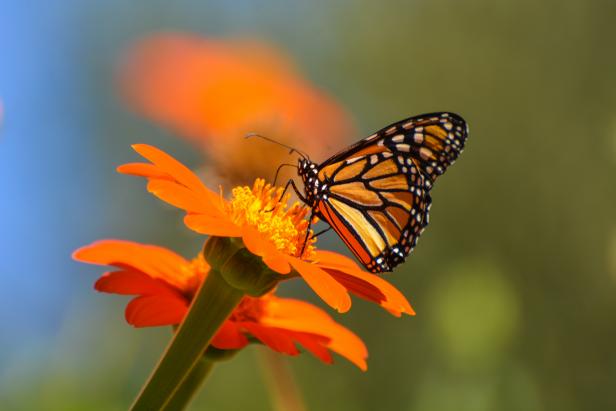
Monarch Population Down 80%
Monarch butterflies were once been found in backyards across the country. Generations of schoolchildren have reared monarchs in classrooms, watching in wonder as striped caterpillars transform into large orange-and-black adult butterflies. The monarch’s multigenerational migration is legendary — a journey of more than 2,000 miles from Mexico to Canada, undertaken by animals weighing less than a single gram.
The monarch plays a unique and prominent role in the imagination of our country, especially considering it’s an insect. These creatures are ambassadors of nature in people’s gardens and symbols of summertime outdoors.
Yet these butterflies, once a familiar sight, are plummeting toward extinction due to landscape-scale threats from pesticides, development, and global climate change.
In monarchs’ overwintering groves, there were once so many butterflies that the sound of their wings was described as a rippling stream or summer rain. Early newspaper descriptions described branches breaking under the weight of so many butterflies and depicted the masses of monarchs as “the personification of happiness.”
In 2017 the annual March count of monarchs “overwintering” in Mexico’s mountain forests — where 99 percent of the world’s monarchs migrate for the winter — showed that numbers had fallen by 27 percent from the previous year’s count and by more than 80 percent from the mid-1990s. That drastic decline was attributed in part to more extreme winter storms that killed millions of monarchs the previous March. Monarchs need a very large population size in order to be resilient to threats from severe weather events, pesticides and climate change.
In 2020 the yearly count of overwintering monarchs showed an even more dramatic decrease of 53% from the previous year’s count. The numbers are now well below the threshold at which government scientists predict the migration could collapse.
Meanwhile, even the population of western monarchs, which overwinters in California, is declining. The count in 2017 showed the population reached a historic low of fewer than 29,000 butterflies — down from 1.2 million two decades previously, and falling below the predicted extinction threshold. The population failed to rebound in 2019, maintaining just 29,000 individual butterflies.
The heart of the monarch’s range is the midwestern Corn Belt, where most of the world’s monarchs are born on milkweed plants growing in agricultural fields. Because of the ubiquitous spraying of Roundup on corn and soy that have been genetically modified to resist herbicides, the monarch is in bad trouble in the core of its range, where its sole host plant, milkweed, is disappearing. In a one-two punch, climate change is undermining the stable weather conditions and predictable flowering seasons that monarchs need to complete their migration. Climate change also threatens these butterflies’ overwintering habitat in the mountain forests of Mexico, however, the International Monarch Reserve in Mexico is expected to become climatically unsuitable for monarchs by the end of the century.
Monarchs’ decline is a harbinger of widespread environmental change. The plummeting population of this familiar butterfly, along with the decline of many other butterflies and bees, threatens the wellbeing of people as well, because the food security of humans is dependent on the ecological services that pollinators provide. History shows a tragic record of the unexpected decline of abundant and widespread species. Complacency and false-positive assumptions about the resiliency of once-common species can have tragic consequences when timely action is not undertaken to safeguard their populations. The migration of the monarch butterfly is at risk of being lost unless humans take rapid action to protect it.
Steps you can take to help monarch butterflies:
Plant milkweed:
- Common milkweed
- Butterfly milkweed
- Swamp milkweed – grows well in damper conditions but also in regular gardens
Plant butterfly-friendly flowers:
- Pale purple coneflower
- Black-eyed Susan
- New England Aster
For the latest information and for more updates on everything Kindersley ‘Like’ the Kindersley Social Facebook page below…








































